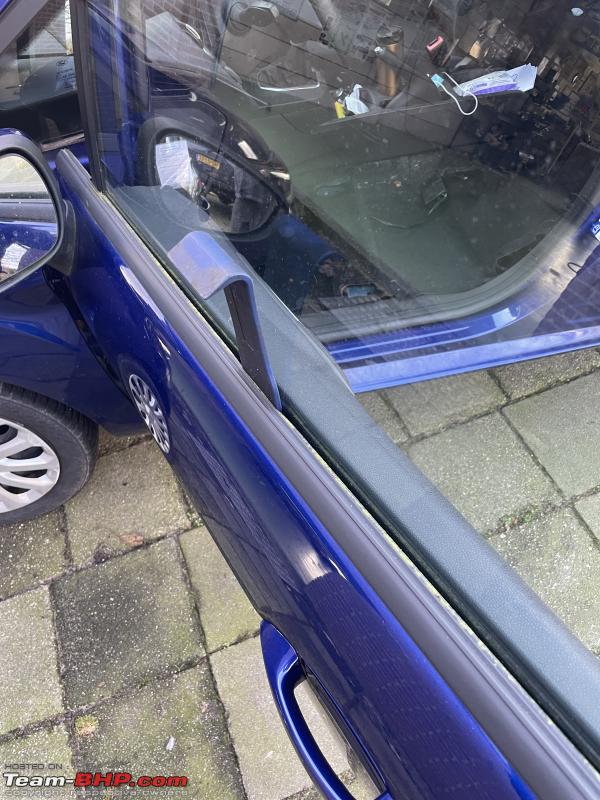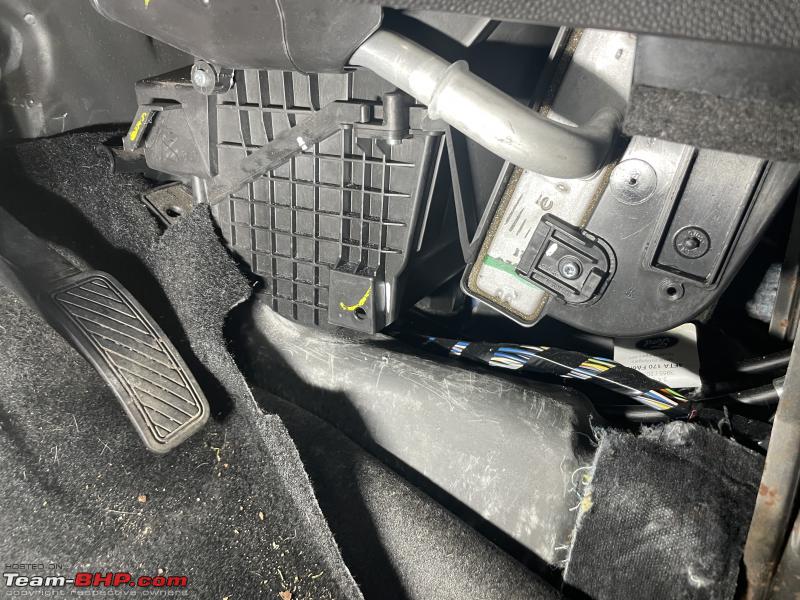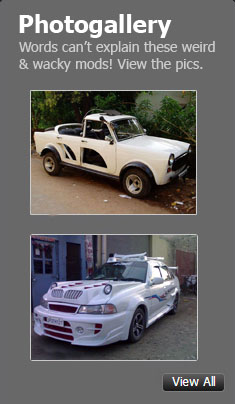News
DIY: Sorting out a mysterious cabin water leak on my Fiesta
The final job, nothing to do with all these leaks, I rotated the tyres front to rear.
BHPian Jeroen recently shared this with other enthusiasts:
The Fiesta leaking continue, (or not?)
So I was pretty confident I had sorted the leak. However, when we drove the Fiesta the other day it still smelled a bit musky. So I decided to investigate some more. Whereas the original completely soaked spot was still bone dry I did notice some more wetness underneath the driver seat as well. Not as bad as the spot behind the driver's seat. It had not penetrated through the carpet yet. But when I stuck my hand from the rear seat underneath the carpet I could feel some wetness.
So that leaves us with two possible reasons. It is somehow spilling over from all the water ingress from the original leak I fixed. I just did not lift the carpet under the front (driver) seat, so I never noticed, and therefor dried out that bit.
Or, alternatively, the Fiesta had another leak!! As the drying out always takes such a lot of effort and time, I decided to do some more trouble shooting as well as drying out everything this time.
Initially, I tried to get a lot of hot air underneath the carpet with my fancy Bosch hot air gun.

That was not good enough. I had to undo the four bolts and the anchor bolt of the driver seat belt and move the chair forward.


When you move a chair on a modern car there are at least two things to think about. The Chair might have electrical controls and or an airbag. In both cases, before you can completely remove the chair you have to undo the respective connectors underneath the chair. When working with airbags (side airbags) you have to disconnect the battery and wait at least ten minutes or so before proceeding.

The connectors were a PITA to undo.


To remove the chair, in my experience with most cars, you need to put it in the most forward position, straight up, move the steering wheel up and in as much as possible and you might be able to wriggle it out.

I could not peel the top layer of carpet away from the sills and get some proper warm air in there. Of course, first I spend several hours with towels drying out the footwell and the velt under carpet first.


It took another two days of drying like this. I don't let the heater run when I am not home or at night. But even then it takes quite some time.
There are a couple of well-known trouble areas that can lead to the driver's footwell getting wet:
- Problems with the door inside foil.
- Problems with the cowl drains
- Problems with the AC/Cabin heater drain.
I could not spot any such evidence directly, but decided to try it out and investigate.
First I pushed the Fiesta out of my garage and used the garden hose on her. I checked the left rear and rear first as that was the original point of water ingress. No, everything stayed bone dry.
Next the windows. I put one of my trim removal tools in between the window and the rubber. This ensures plenty of water from the garden hose enters the door.

All the water entering the door along the outside of the window needs to drain out of two drain holes at the front and rear of the door. There is plastic foil inside the door that ensures none of the water enters any other parts of the door. Because if it does it can make its way into the door sills.
What you see here is the door whilst I'm hosing it down from the outside with the garden hose. The water in the middle is water that is running down on the outside of the door. I only saw water coming out of the drain and nowhere did water appear from underneath the door trim. So that is good!

For good measure, I just checked the left rear door in the same way. It's fine.
I also kept the garden hose on the front cowl for about 5 minutes or so. I could not detect a single drop inside the cabin, underneath the dashboard, so I am assuming the drains work very well. I could see the water running out of the drains, just behind the front wheels as well.
I removed the trim on the left (driver side) of the centre column. That gives me access to the AC/Airheater box and also allows me to peel the top carpet away so I can get access to the (wet) under carpet from here as well
I inspected everything closely. I thought I saw signs of moisture on the gaskets of the AC evaporator. But when I checked that wasn't moisture. that is just how it looks.


Opened up the same on the right side. On this side, there is also the cabin air filter.

Manged to pull out the cabin air filter and it was bone dry.

With the cabin air filter, I poked around inside the cabin AC/Airbox with my little camera, but I did not see any evidence of wetness inside. Which also suggests the drain is open.

I had to rummage around my "box with many trim fasteners" to put all the trim back in place.

By now I was satisfied that I had checked everything that I could possibly check except looking at the AC drain from underneath. I decided to "rebuild" the inner parts of the Fiesta first.
Vacuumed out the carpet as well. With the driver seat removed you can get at parts where you normally never can get to. I managed to straighten out the carpet. It looks a bit dodgy here, but that is just how it happens to look as I had just vacuumed it. In all, it is hardly noticeable I pulled the carpet.

Before putting the chair back in I checked my Fiesta Workshop manual for the correct torque value for the various bolts. Only 35Nm fo the chair bolts and 40Nm for the anchor bolt of the seatbelt.


Connected the battery and everything worked normally again. I decided to have a quick look from underneath to see if I could spot that AC drain.
The rear wheel choked, two jacks, and two axle stands.

I could not spot that drain. To the best of my knowledge, it ends above the heat shield of the exhaust. Similar to the Jaguar. You can't get access to it. But if the heat shield is dented, it can block the drain. But the heat shield looked fine.
The final job, nothing to do with all these leaks, I rotated the tyres front to rear. Fiestas are known for cupping their tyres. The best way to prevent this is to swap front to rear once a year or so.

Easy job, two jacks on the same side, front and rear.
Just a little nerdy-thingy; if your car has traditional hub cabs when you pull them off, look closely. Very often they have a dedicated position for the valve!

Read BHPian comments for more insights and information.






_0_0.jpeg)

.jpg)


.jpg)






